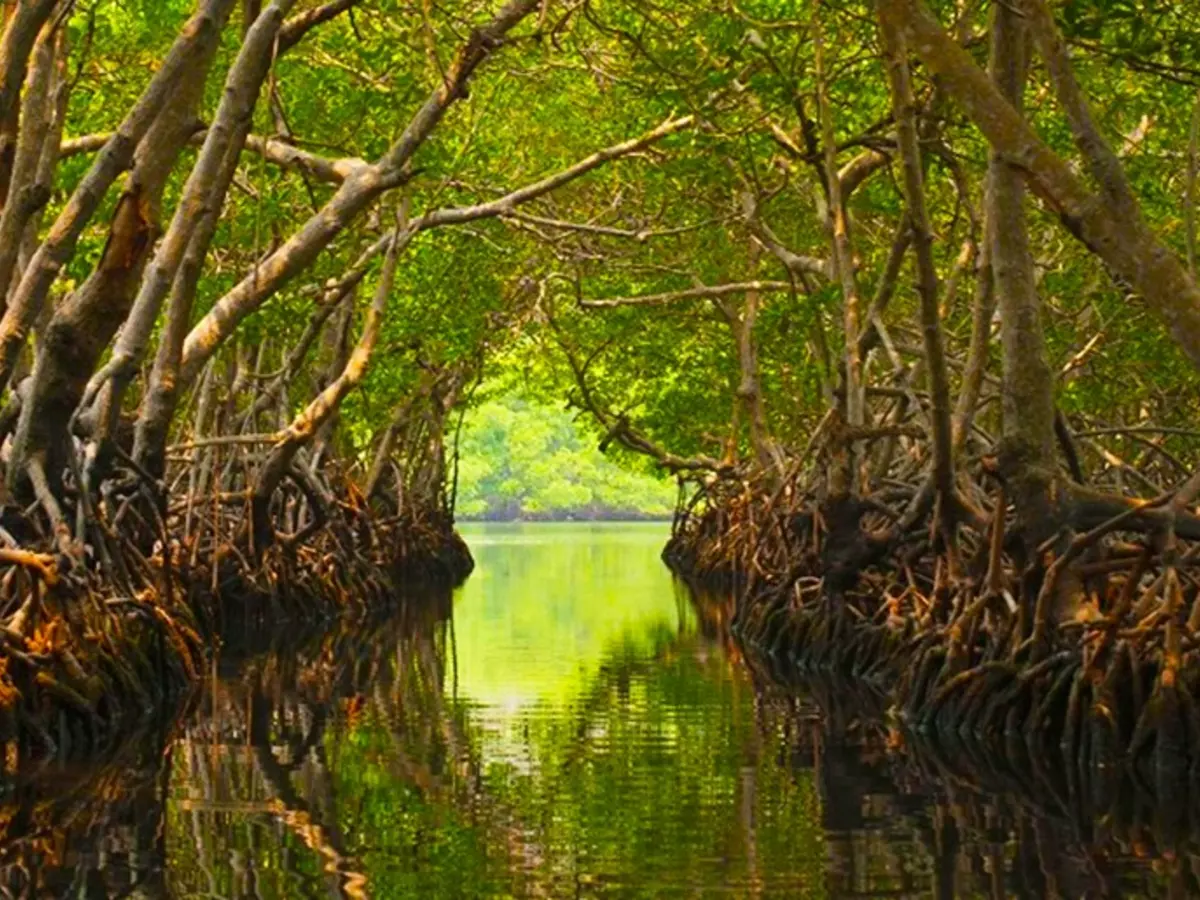How Mangroves In Odisha's Coastal Areas Could Help Mitigate Damages Of Cyclone Yaas
The much-dreaded landfall of very severe cyclonic storm Yaas began south of Balasore in Odisha Wednesday morning. The landfall process will last for three-four hours.

The much-dreaded landfall of very severe cyclonic storm Yaas began south of Balasore in Odisha Wednesday morning. The landfall process will last for three-four hours.
More than 4,000 personnel in 52 units of the National Disaster Response Force, 60 Odisha Disaster Rapid Action Force, 200 fire service teams and 86 tree cutting units have been pressed into service.
According to the State SRC, 860 permanent shelters and 6,031 additional shelters which collectively could accommodate 7.5 lakh people have been identified.
Despite the efforts by disaster management authorities, people in the coastal regions have pinned their hopes on dense mangrove forests to ward off the damage and offer protection from the cyclone.
 Bhitarkarnika Wildlife Sanctuary, Odisha/Smitha G S, Own Work
Bhitarkarnika Wildlife Sanctuary, Odisha/Smitha G S, Own Work
Locals are exuding optimism that the rich mangrove forest cover along the wetland sites of the park would again turn into a saviour for them.
¡°Everybody here is confined indoors either in homes or cyclone shelters. The forest cover around had protected us with minimal damage in past cyclones. We pray forest withstands the onslaught this time also," said Ganesh Chandra Gudia who lives in Talchua village beside the Bhitarkanika National Park in Kendrapara district.
The district is close to Dhamra port, where the landfall took place this morning.
The national park had withstood the onslaught of cyclone Amphan that had barrelled through coastal Odisha in May last year.
Yaas cyclone:
¡ª ABINASH MISHRA (@ABINASH_IAS) May 26, 2021
Quite disturbing visuals coming from Baliapal, Balasore . Villages got submerged. My prayer for our people . #yaas #odisha pic.twitter.com/8HZGOFYFMA
¡°The coastal woodland has the capacity to withstand wind speed up to 20 kilometre per hour. We are scared but hopeful that nature will arrest the stormy onslaught," Nrusingha Behera, a resident of Nalitapatia village said. The luxuriant mangrove cover often acts as a protective barrier against cyclone and tidal surge.
How mangroves act as a barrier
Bhitarkanika is a rich storehouse of mangrove genes. Researchers have come across 11 of the 70 mangrove species, which were at elevated threat of extinction in the world, in the national park.
Odisha is endowed with a reserve of a mangrove forest area of 231 square kilometer with a major chunk lying in Bhitarkanika. It stands second only to Sundarbans in West Bengal. Besides Bhitarkanika in Kendrapara, the districts of Balasore, Bhadrak, Jagatsinghpur and Puri are also home to mangrove, otherwise known as coastal woodland.
Mangroves play a crucial role in protecting human and animal communities from massive storms.
 Bhitarkanika National Park
Bhitarkanika National Park
Mangrove roots can break up the force of a storm surge, soaking up some of its energy and protecting people living on coasts from cyclone damage.
Climate change has resulted in a spike in frequency and intensity of cyclonic storms.
The aerial roots of mangrove forests retain sediments and stabilise the soil in the areas between high tide and low tide (intertidal areas) by reducing erosion during storms and floods. The roots, trunk and canopy of the mangroves can dissipate storm surges and waves.
Mangroves can also cope with sea level rise through gradual vertical growth.
